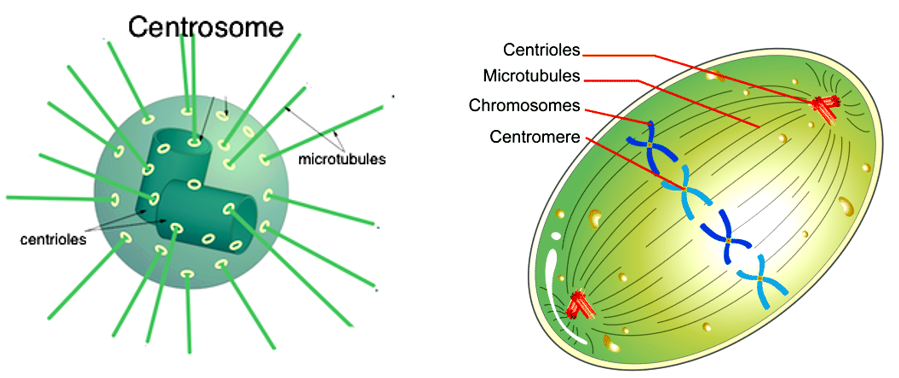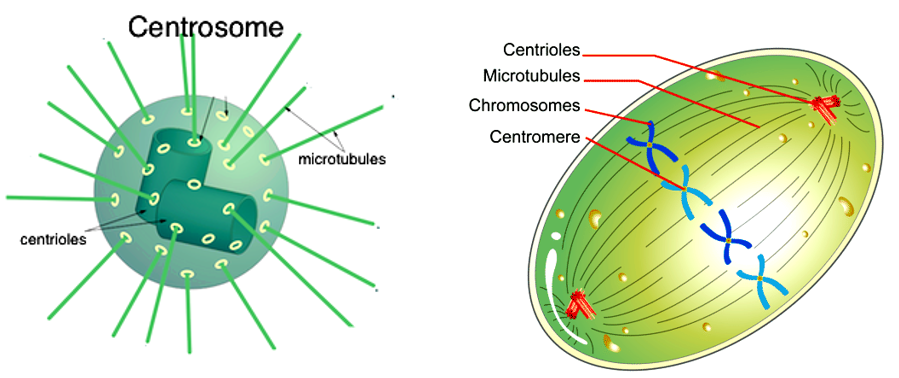- Centrioles are non – membranous cylindrical bodies found near the nucleus in the centrosome, a granular mass that serves as an organizing center for microtubules.
- These are seen in animal cells and flagellated plant cells.
- Centriole can be viewed only during cell division.

- Centrosome usually contains two centrioles.
- A pair of centrioles is called diplosome.
- They are positioned at right angles to each other.
- Each centriole is made of nine bundles of microtubules (three per bundle) arranged in a ring.
- The fibres of centrioles contain tubulin, along with Lipid molecules.
- The triplet fibres are connected together by a dense material.

Functions
- These are the centres for the organisation of spindle fibres in animal cells.
- These become the basal bodies of cilia and flagella
- These are responsible for the development of cilia and flagella.
Microbodies
These are small spherical, subcellular organelles bounded by a unit membrane containing enzymes like oxidase, peroxidase and catalase. They were first described by Rhodin in 1954.
- Microbodies arise from ER by budding.
- They are found in close association with ER, mitochondria and chloroplast.
The microbodies are of two types.
Glyoxysomes:
- These are small cell organelles containing the enzymes of the glyoxylate cycle.
- These are found in plant cells and are particularly abundant in germinating seeds.
- Glyoxysomes also contain the enzymes for oxidation of alcohols and alkane.
Peroxisomes:
- These are microbodies containing peroxidase enzymes.
- They are involved in the formation and decomposition of hydrogen peroxide.
- They also involve in -oxidation of fatty acids.
- They also serve as the sites of photorespiration.
